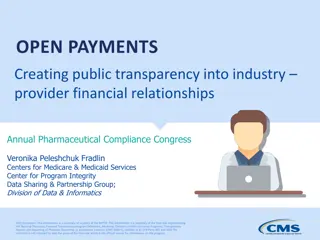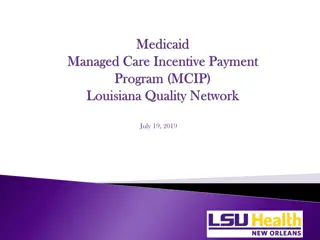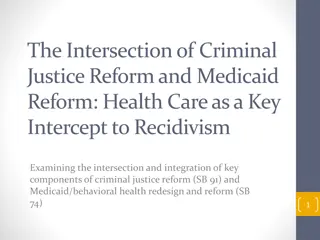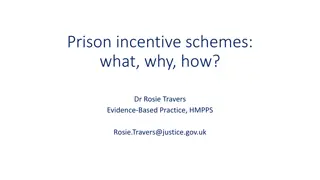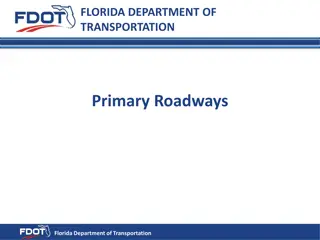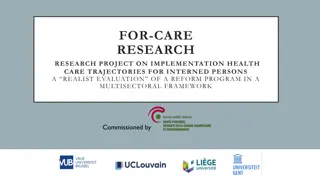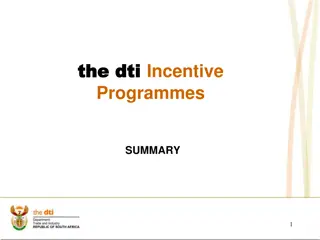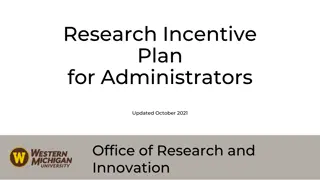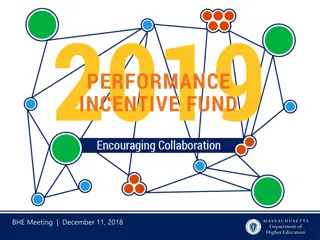California’s Delivery System Reform Incentive Payments (DSRIP) Program INTRODUCTION TO DSRIP 2.0
California's Delivery System Reform Incentive Payments (DSRIP) Program aims to improve healthcare quality, enhance patient care experience, and reduce costs through seven key priorities. The program's goals include strengthening primary care, promoting innovative approaches, and addressing social determinants of health. Explore the framework, waiver concepts, and initiatives driving this transformative healthcare system reform in California.
Download Presentation

Please find below an Image/Link to download the presentation.
The content on the website is provided AS IS for your information and personal use only. It may not be sold, licensed, or shared on other websites without obtaining consent from the author.If you encounter any issues during the download, it is possible that the publisher has removed the file from their server.
You are allowed to download the files provided on this website for personal or commercial use, subject to the condition that they are used lawfully. All files are the property of their respective owners.
The content on the website is provided AS IS for your information and personal use only. It may not be sold, licensed, or shared on other websites without obtaining consent from the author.
E N D
Presentation Transcript
Californias Delivery System Reform Incentive Payments (DSRIP) Program INTRODUCTION TO DSRIP 2.0 Neal Kohatsu, MD, MPH, Medical Director Tianna Morgan, DSRIP Coordinator 1
DHCS Quality Strategy: Three Linked Goals Improve the health of all Californians Enhance quality, including the patient care experience, in all DHCS programs Reduce the Department s per capita health care program costs 2
Seven Priorities Improve Patient Safety Deliver Effective, Efficient, Affordable Care Engage Persons & Families in Their Health Enhance Communication & Coordination of Care Advance Prevention Foster Healthy Communities Eliminate Health Disparities 3
1115 Waiver Objectives Strengthen primary care delivery and access Avoid unnecessary institutionalization and services by building the foundation for an integrated health care delivery system that incentivizes quality and efficiency Address social determinants of health Use California s sophisticated Medicaid program as an incubator to test innovative approaches to whole-person care 4
1115 Waiver Framework Budget neutrality requirement Payment and system redesign Innovative sources of Non-Federal share Ongoing support for safety net 5
DHCS 1115 Waiver Concepts Federal/State Shared Savings Initiative Payment/Delivery Reform Incentive Payment Programs Safety Net Payment Reforms FQHC Payment/Delivery Reform 6
Waiver Concepts (contd) DSRIP 2.0 California Children s Services Redesign Medi-Cal Shelter/Housing Workforce Development 7
Context for 1115 Waiver CalSIM Maternity care quality Health homes for complex patients Palliative care Accountable communities for Health DHCS ongoing quality initiatives 8
Purpose of DSRIP Workgroup To involve stakeholders in developing an innovative DSRIP 2.0 that will improve health and health care To identify concepts that may advance a health system within and beyond the 1115 waiver 9
Californias Delivery System Reform Incentive Payments (DSRIP) Program DSRIP 1.0 LESSONS LEARNED Erica Murray, CEO, California Association of Public Hospitals Neal Kohatsu, MD, MPH DHCS Medical Director 10
Overview 5-year demonstration project to create enhanced health care systems (infrastructure, outpatient, inpatient, primary and specialty care) 17 hospital systems; 21 public hospitals 20 are teaching hospitals 11
DSRIP Structure Category 1 Infrastructure Development Category 2 Innovation & Redesign Category 3 Population-Focused Improvement Category 4 Urgent Improvements in Care Category 5 HIV Transition Projects (n=10) 12
Selected Highlights From From DSRIP 1.0 13
Primary Care Redesign 17 systems expanded PCMHs Kern Medical Center patient navigator program Phone Consultation Clinic (Contra Costa) Telehealth patient portal (UCSF) 14
Data Management to Improve Care for Complex Patients Chronic disease registry (San Joaquin) Complex care program(Alameda) Patient navigator pgm (UC Irvine) 15
Promoting Culture of Quality 16 service-specific dashboards (SF General) LEAN management and EHR flag to triage high-utilizers into management (UC Davis) Mental health screening (San Mateo) 16
Patient Safety Early sepsis management (Santa Clara Valley Medical Center) Reduced surgical site infections (Riverside) Central-line associated bloodstream infection rate reduction (Arrowhead) 17
Lessons from 1.0Summary Demonstrated striking examples of improved quality and outcomes Resource investment and complexity underestimated Advances in culture and leadership 18
Looking Forward The DSRIP 2.0 proposal from Ca would be the first renewal reviewed by CMS CMS highlights population health in the Oregon and New York DSRIP programs System transformation and improvement can happen in DSRIP, the 1115 waiver, CalSIM, and beyond 19
CAPH/SNI and DHCS Concepts Coordination leading to integration Depth required for CMS review process Prevention Complex patients Overuse Care transitions Efficiency 20
CAPH/SNI and DHCS Concepts (contd) Patient safety Alignment with other initiatives Patient/family, community engagement Cross-system and center-specific projects Technology (e.g., EHR) Potential for tiered involvement of District Hospitals 21



